Shuraku: A Taste of Japan's Refined Sophistication

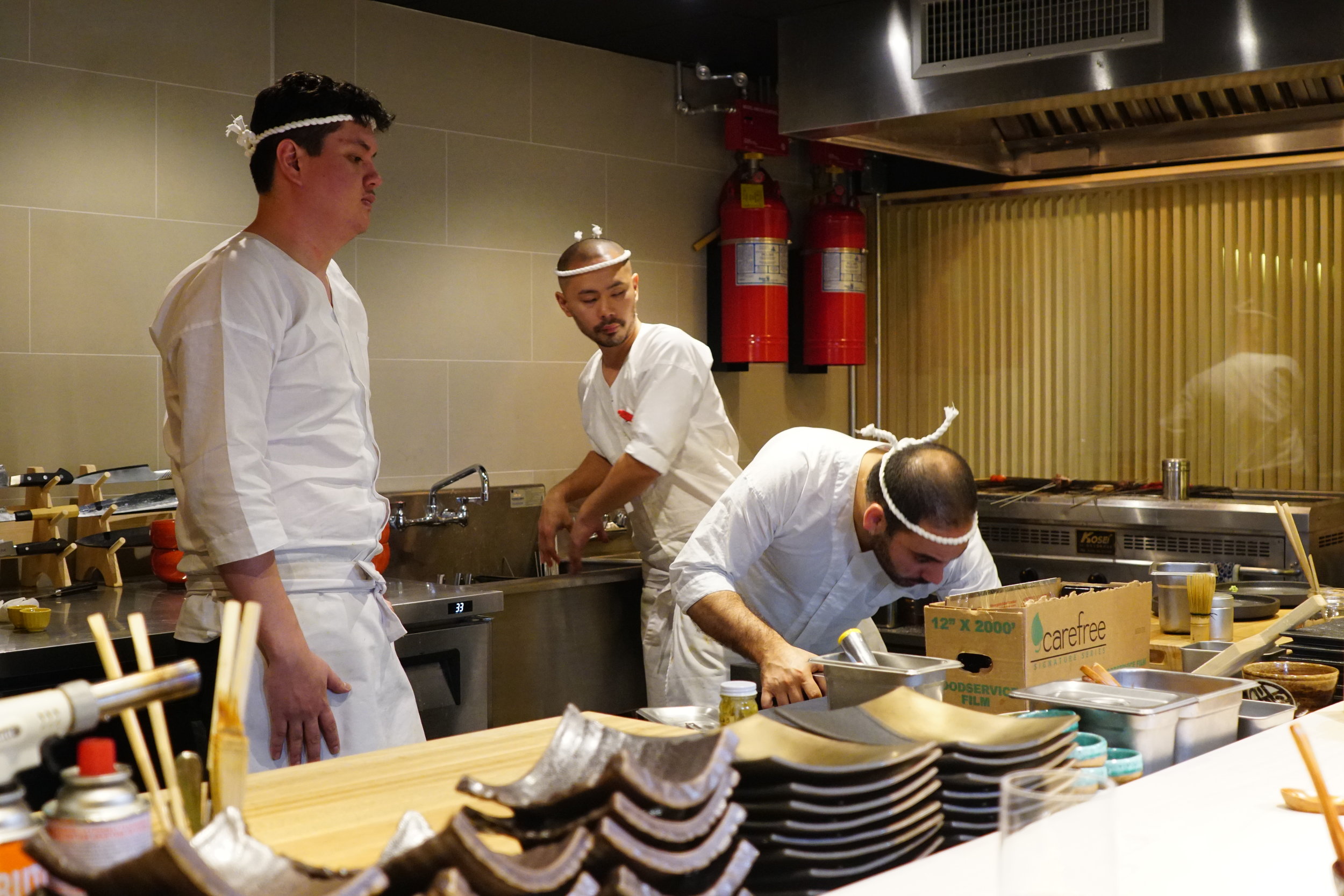
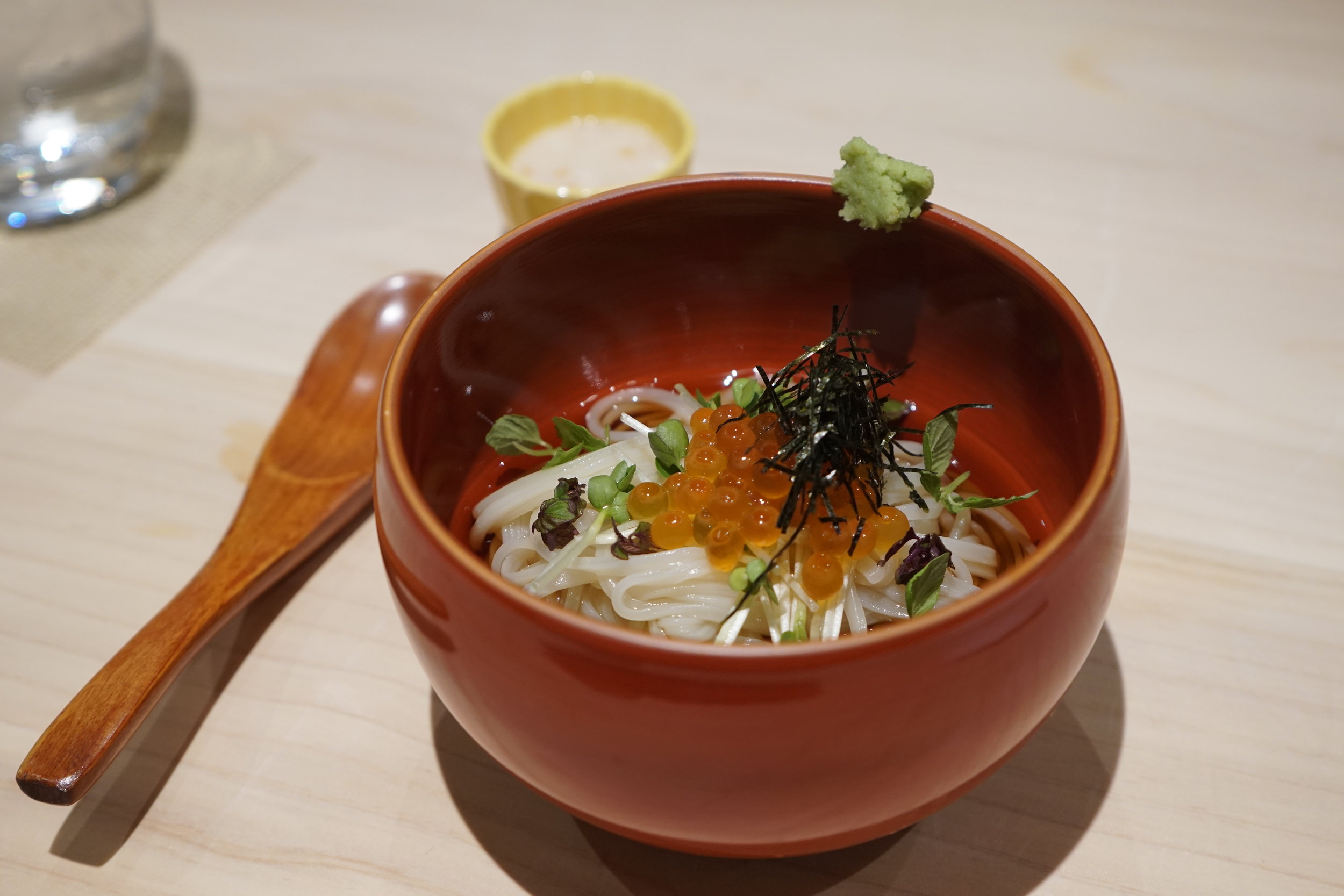
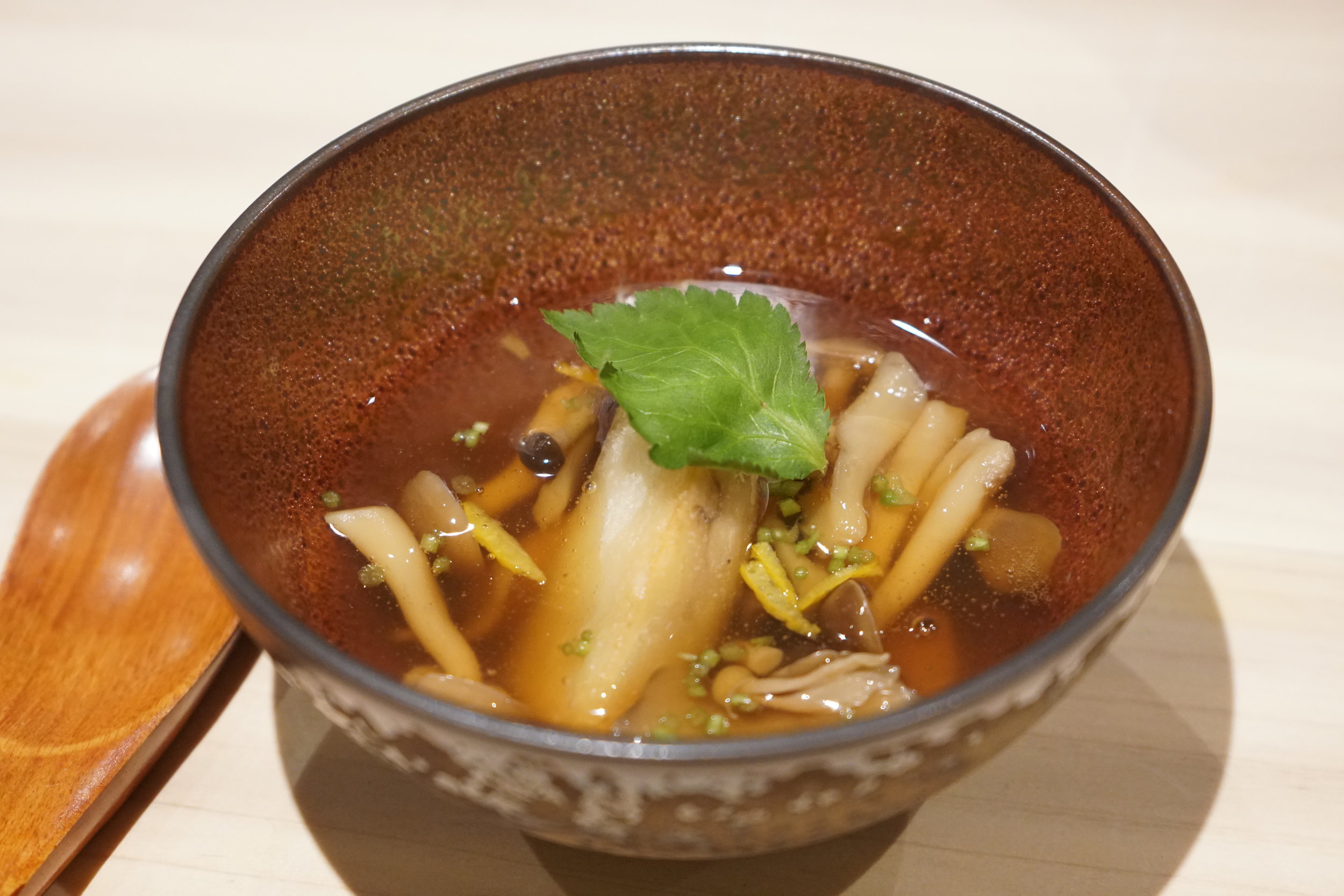
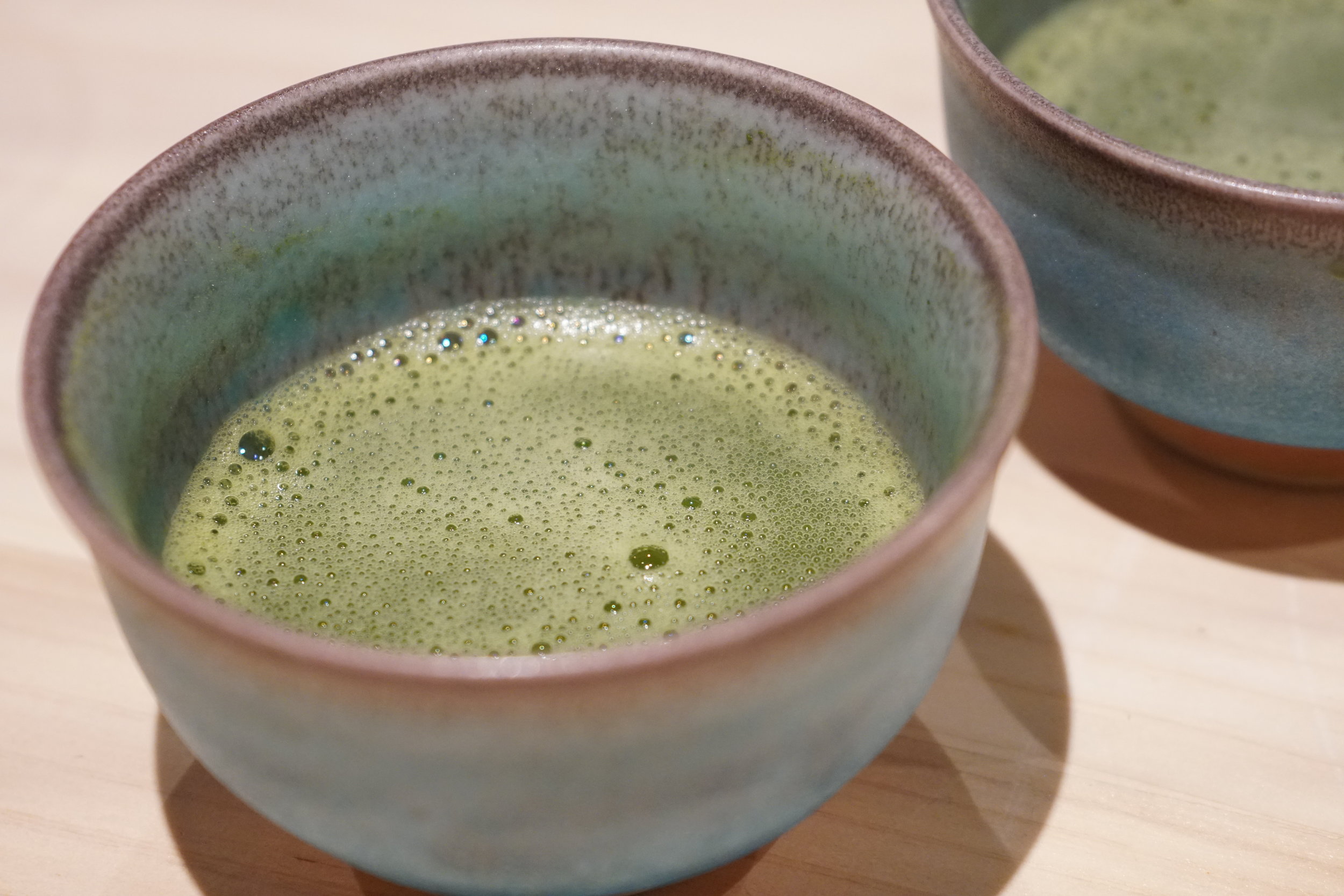
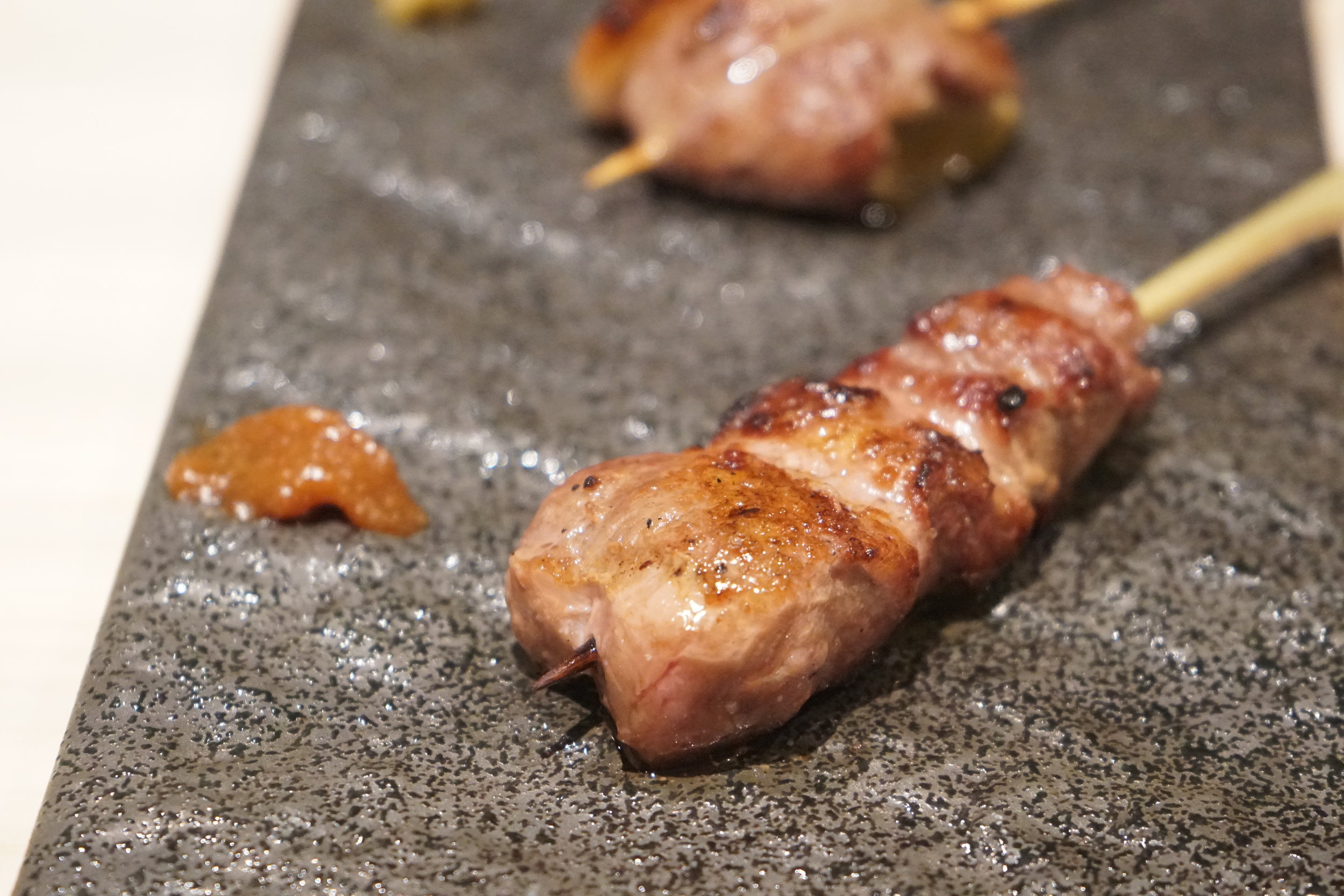
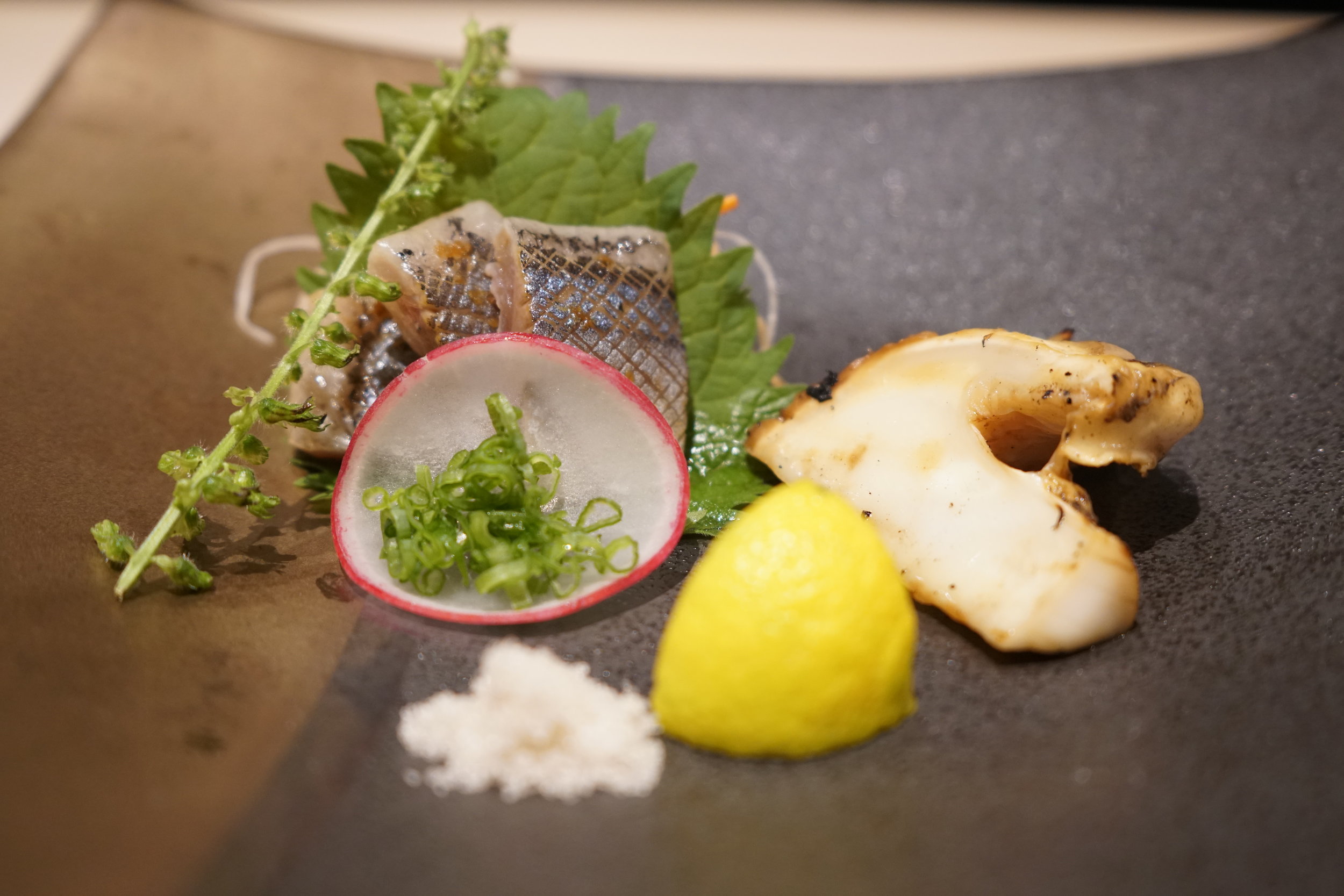
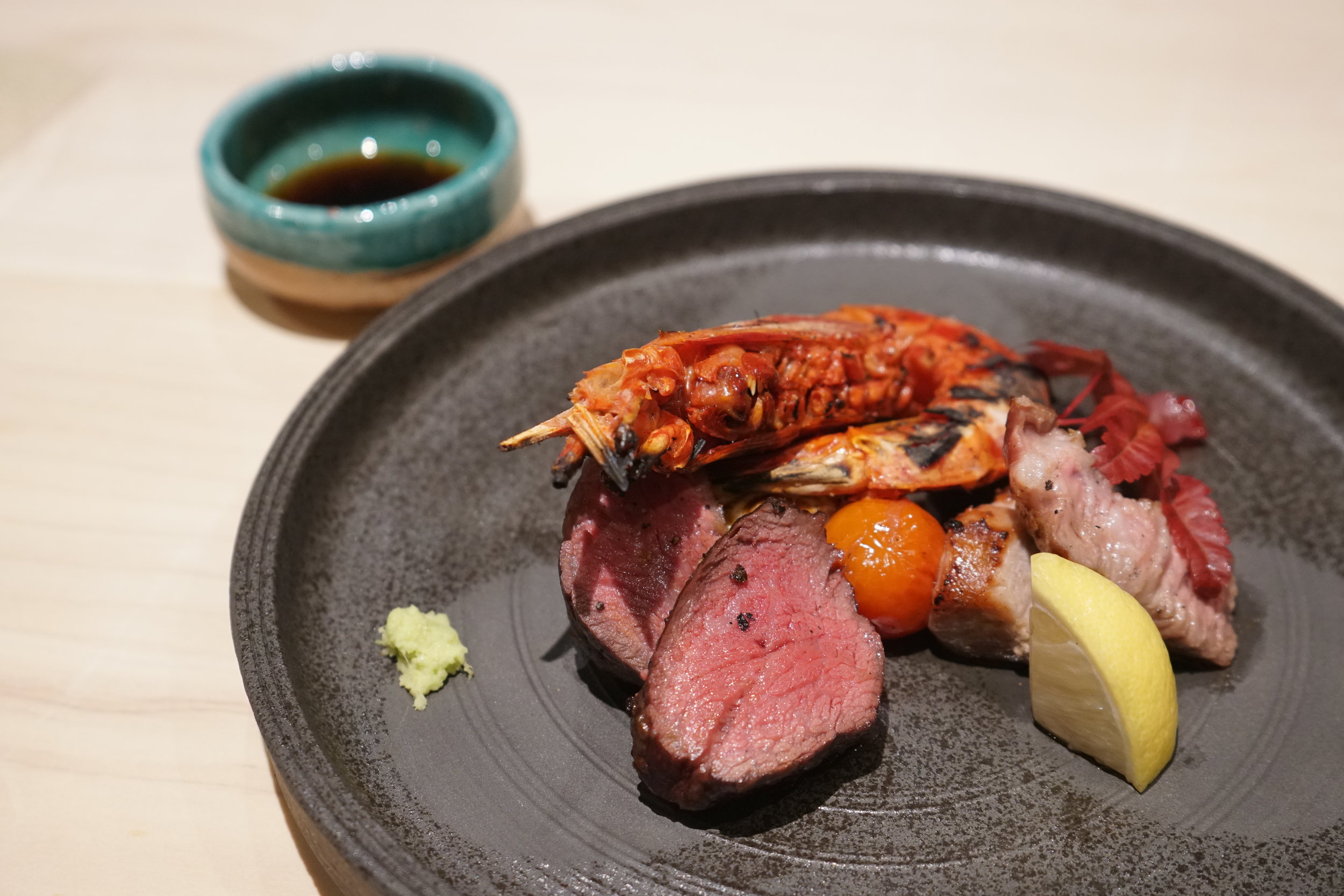
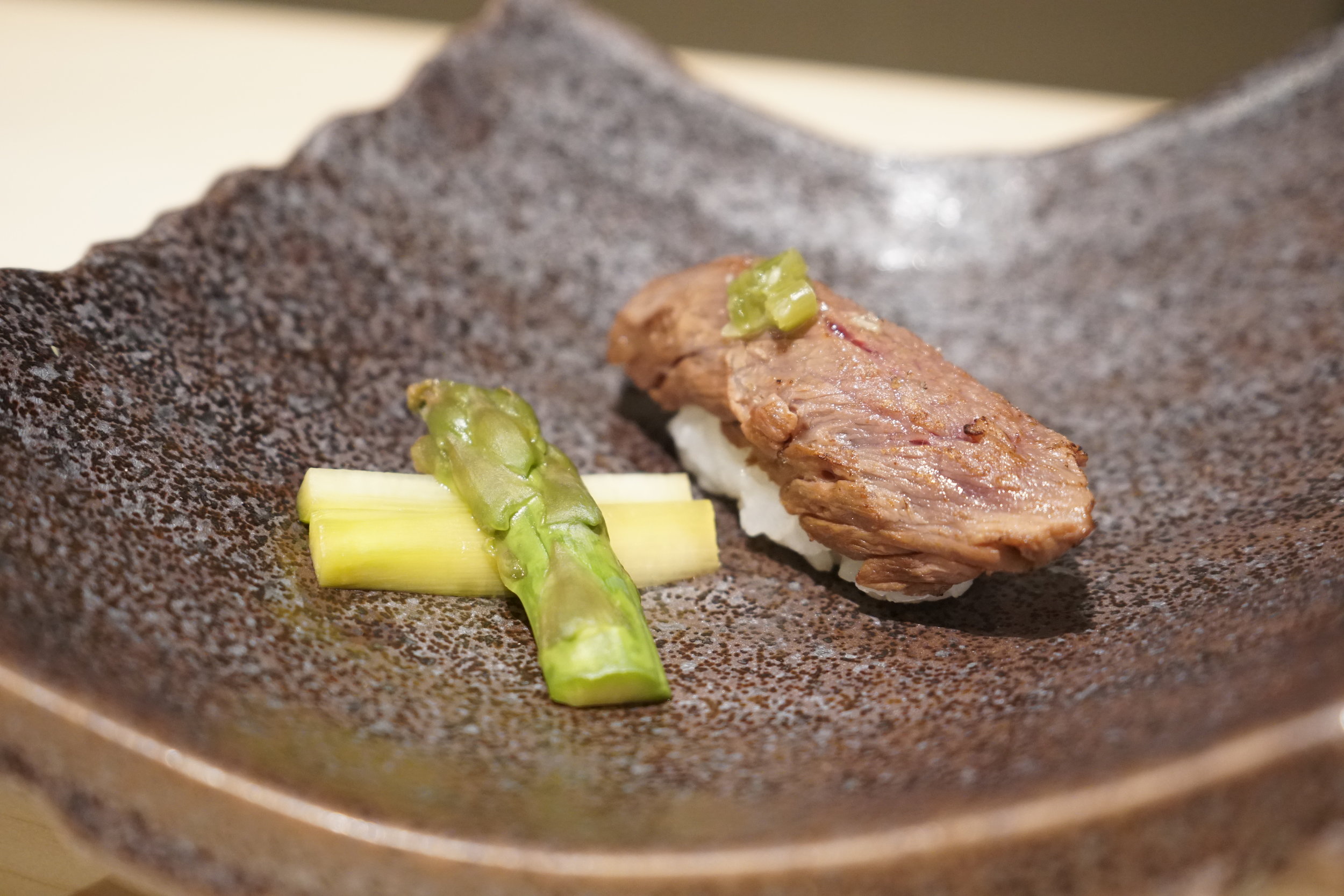
Hello and welcome back to Ngo Your Meal! Today, I'm really excited to talk about Shuraku, a new gastronomic contender in the West Village, serving up some very interesting seasonal kaiseki dinners (traditional Japanese multi-course meals). The creativity at Shuraku is led by chefs Ryunosuke Sato and Joe Conti. Before our visit, my friend Tiff and I actually wanted to go to their test kitchen, Ichiban Nom Nom. Unfortunately, we weren't able to get any seats for that.
Shuraku opened in the fall of 2017 and we were excited when we got a message from Joe that they were accepting reservations via Resy for their soft opening. We signed up immediately!
When we entered the restaurant, I was impressed with the simplicity of the restaurant's decor. It lacked any sense of clutter, which is in line with classic Japanese minimalism. It even smelled new! Perhaps it was the immaculate hinoki wood counters that surround the open kitchen.
As we walked into the main dining area, we experienced the typical irasshaimase greeting from the staff. That was nice. But, as if rehearsed, we also received a very strange cult-like, over-the-shoulder glance from almost all the other patrons. As we sat down and made conversation with some of our fellow diners, we realized that most of them were big in social media. We met some oddly pretentious folk but the nice friends we met had made up for it.
If you're reading this, thanks for remembering us, Joe! We appreciate that you reached out during your soft opening. Hope to visit again soon. And, thanks Tiff for helping me take some of these pictures, especially the Carabineros Prawn shot.
Address: 47 8th Ave, New York, NY 10014
Recommended:
Oboro Tofu with Dashi Soy and Wasabi
Washu Beef Sushi with Marinated Asparagus
Sanma Mackerel Pike with Yuzu Soy Sauce, Grilled Matsutake with Seaweed Salt and Sudachi
Chicken Oyster Yakitori with Lemon
Magret Duck with Tokyo Scallion Yakitori and Yuzu Kosho
Pork Skirt Steak Yakitori with Hibiki Miso
Japanese Taro in Mushroom Dashi Broth
Washu Beef (Culotte) with Cipollini Onion
Mangalitsa Pork Shoulder with Cherry Tomato
Carabineros Prawn
Washu Beef, Mangalitsa Pork Shoulder, Carabineros Prawn
Inaniwa Udon, Ume, Tororo
Vanilla Yogurt Ice Cream
Matcha
Anyway, let's get started. The first dish was a homemade Oboro Tofu. Oh man. What a start! Oboro tofu is a simple dish that really doesn't need any other toppings beyond soy sauce, sesame seeds, or bonito flakes. Oboro is unique because it's really just tofu that hasn't been pressed or molded. As a result, the tofu appears more fluffy and light.
Shuraku's tofu was delightful. It was pleasantly nutty and mildly sweet. Honestly, I could eat this for dessert too. Their tofu was topped with some dashi soy and wasabi. That's all you need with great tofu!
The second course was the Washu Beef Sushi with Marinated Asparagus. Washu beef is America's version of Kobe Beef. It's often called Kobe-style Beef. These cattle have ancestors that have been cross-bred with American Angus cattle. The meat is a bit more tender and tends to have better marbling than regular Angus meat.
I thought this one was fine. I probably would have preferred the meat to be a bit more medium rare to rare. The meat was cooked closer to medium. I think that it would have been more interesting to have some real A5 wagyu for this one but that's alright. The cost of the meal was $100 and having legit Japanese wagyu would probably skyrocket the price of the dinner.
The third course was Sanma (Mackerel Pike or Pacific Saury) and Grilled Matsutake. I liked this one a lot! First of all, it's made up of harder-to-find ingredients. I don't get to see a lot of Pacific Saury outside of Asia. It has a lot of oil and the meat is dense. As a result, you get a very concentrated flavor bomb in a small cut of meat. It goes very well with citrus. Shuraku brushed the fish with some Yuzu Soy Sauce.
The Grilled Matsutake is also a rare find. This mushroom is known to be some of the world's rarest mushrooms. It has a nice, spicy aroma with a gentle cinnamon-like taste. They paired the mushroom with Seaweed Salt and Sudachi. I'm not sure if they get their mushrooms from Japan or elsewhere though.
Next, we had the Yakitori. It came with three different types of yakitori (skewered meats) each with a different type of sauce/condiment. Shuraku uses binchotan, which is actually one of the main reasons that I was interested in dining here. This charcoal emits infrared rays and burns at a lower temperature, which reduces smoke and odors. Binchotan also burns cleaner than other charcoals. It also helps cook the meat evenly and prevents it from drying out.
First things first, the yakitori platter came with Chicken Oyster Yakitori (see above). No, it's not a chicken that lives underwater as a bivalve mollusca. Also known as Sot l'y Laisse, the chicken oysters come from two small, round pieces of dark meat near the thigh and towards the back of the chicken. Chicken oysters are often considered the most flavorful part of the bird. For this, Shuraku provided a slice of lemon to squeeze over the meat. That's all you need for chicken oysters.
The next piece was a Pork Skirt Steak Yakitori (see above). The meat was lean but still quite juicy. It was paired with Hibiki(?) Miso. I'm not sure what Hibiki miso is... I should have asked. Regardless, it was good. I've found that pork skewers go very well with miso condiments.
The last piece was a Magret Duck with Tokyo Scallion Yakitori (see above). It was rich and deep in flavor. The "magret' refers to the duck breast that comes from the Moulard duck. I've never had it with yuzukosho before but, as expected, it was delicious. Yuzukosho is a spicy Japanese citrus paste. It's green color comes from the use of green chili and green yuzu. It's beautifully fragrant and concentrated in flavor. This stuff will change your life.
The next dish was probably my favorite one. It was a Japanese Taro in Mushroom Dashi Broth. Dashi is a type of broth made with Kombu (kelp) and Katsuobushi (preserved, fermented skipjack tuna). It's elegant flavor is a gift from the heavens. Quite frankly, I'm excited to see this level of potential in a Japanese kaiseki restaurant outside of Japan.
I wish I could have had two servings of this!!!
The following dish was like a surf and turf. It sounds unusual at a nice Japanese restaurant but you actually find a lot of dishes like this in many kaiseki meals throughout Japan. First, it came with some Washugyu with Cipollini Onion. This one was good but it wasn't the best.
I definitely liked the Mangalitsa Pork Shoulder a lot more. Mangalitsa is a breed of pig that is native to Hungary. They're actually kind of funny-looking. They look like chubby sheep thanks to their curly fleece. Some people call the Mangalitsa the Kobe Beef of pork given its high fat content. Not only does the pig have a large percentage of fat, but its fat quality is also very good and nutritious due to the pigs' diet. In Hungary, you'll find that Mangalitsa often comes in the form of sausage.
Finally, the last part of this surf and turf was the Carabineros Prawn. Oh boy, these things are gorgeous. The prawn itself is HUGE and shines with a bright red hue. I was excited to eat it but then I almost fainted when I cracked off the head and saw all that luscious ambrosia (see above). These juices are actually the prawn's gonads and the orange color usually signifies that the prawn was a female. I loved it!
Before dessert, we got a refreshing bowl of Inaniwa Udon. This dish was served cold with some ikura (roe), wasabi, and tororo (grated yam). This was the perfect end to all the rich, fatty foods we had consumed throughout the meal. Also, it felt authentic in the sense that the Japanese like to end the meal with a carb-heavy dish to ensure that you're 100% full before dessert.
I devoured this dish in an instant. The udon noodles were thin but had a nice al dente texture. I could have this for breakfast everyday!
For dessert, we ended with a simple Vanilla Yogurt Ice Cream and some nice matcha tea.












